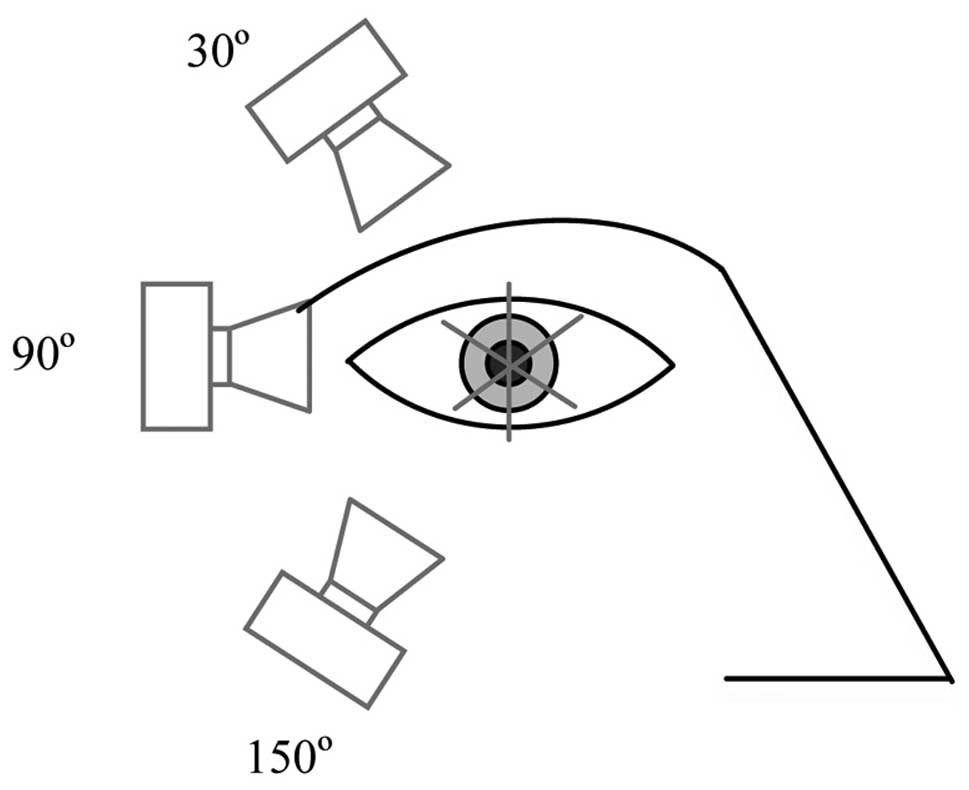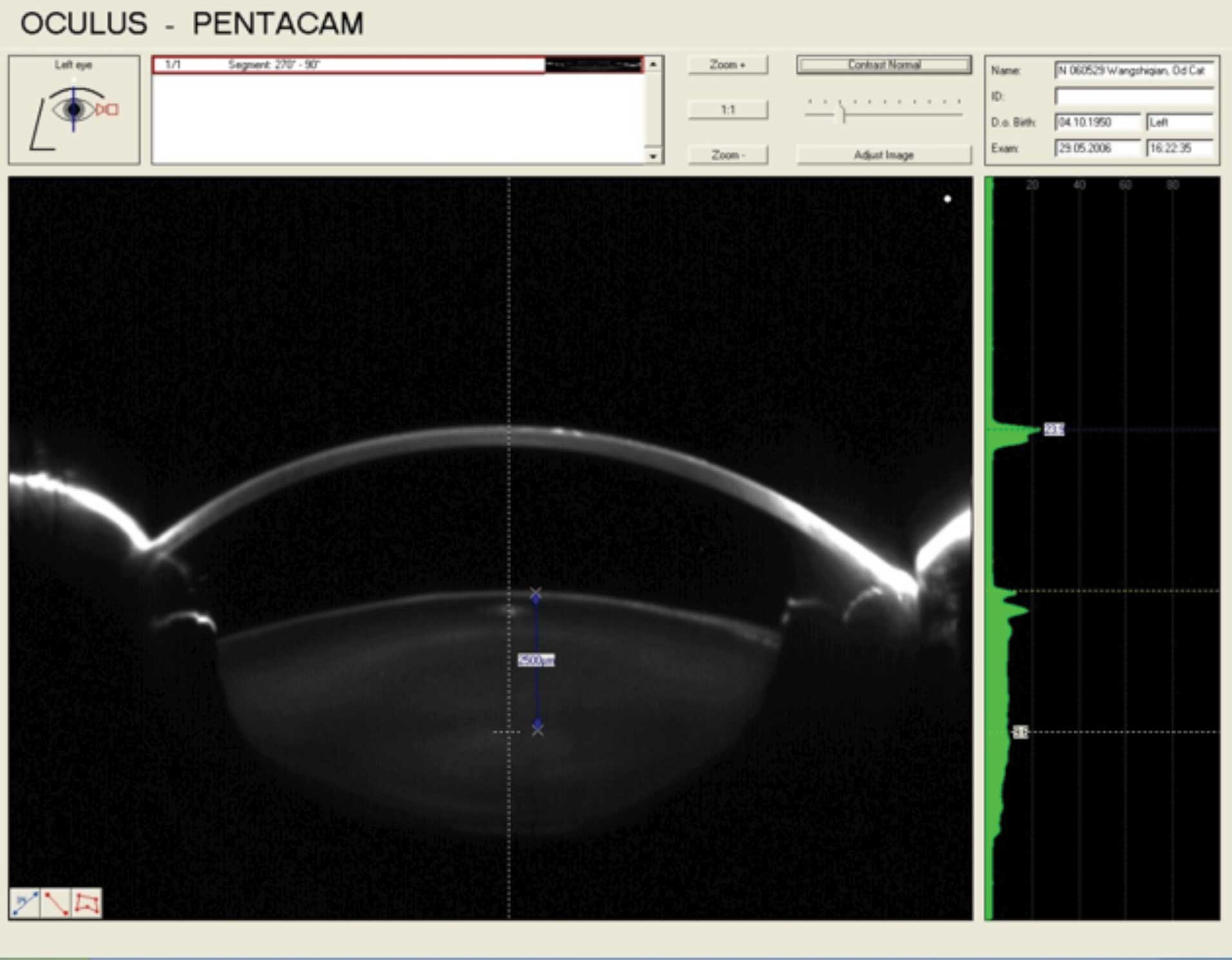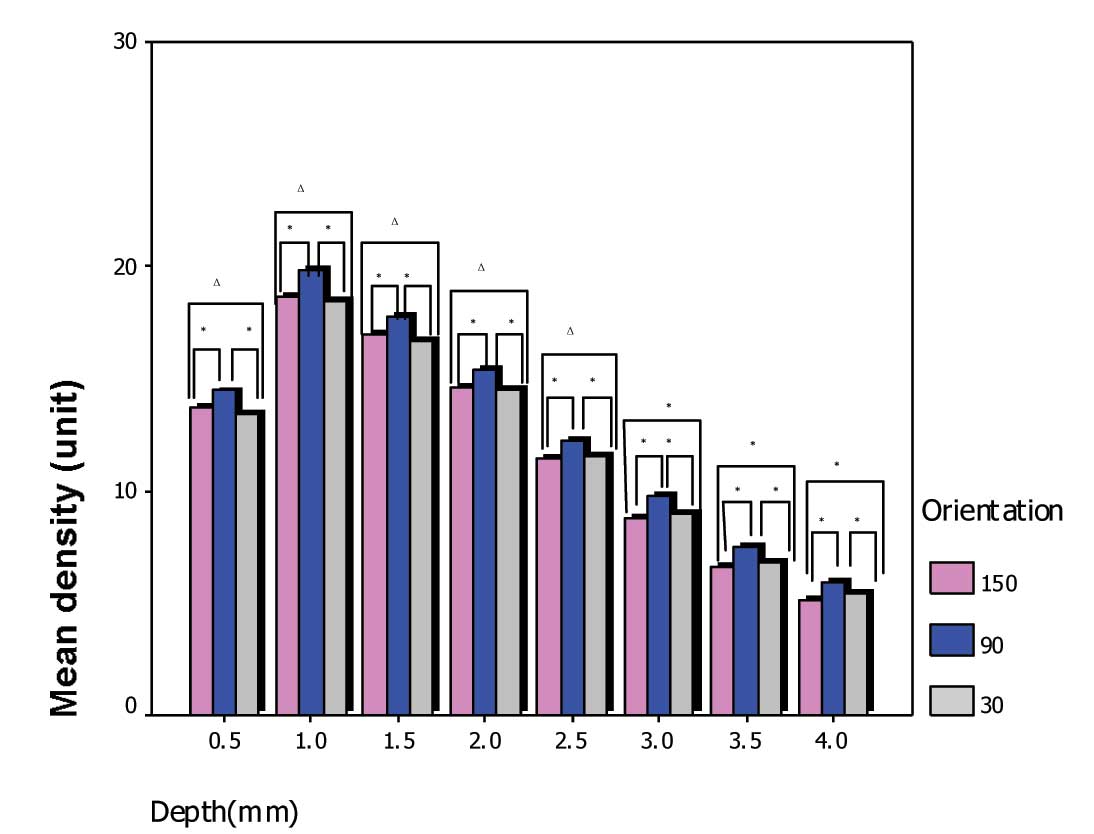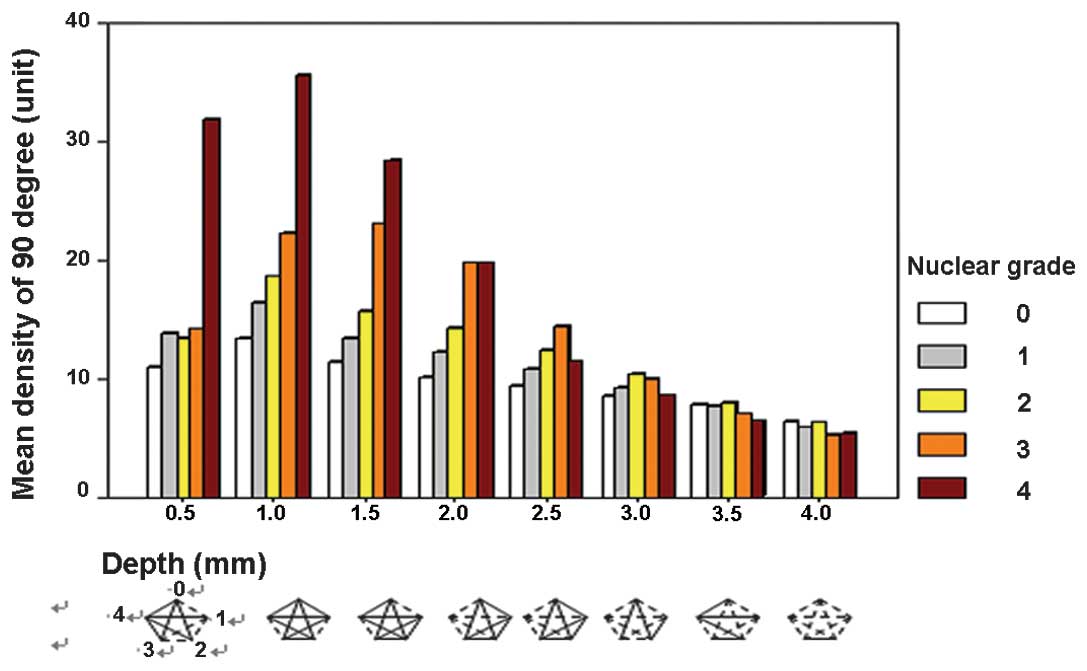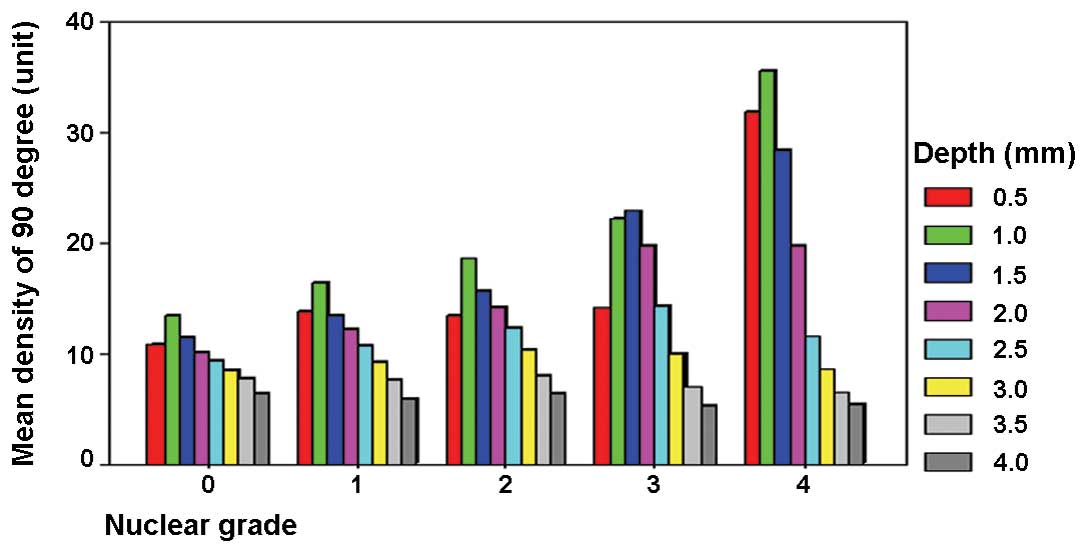Determination of the density of human nuclear cataract lenses
- Authors:
- Published online on: September 9, 2013 https://doi.org/10.3892/mmr.2013.1673
- Pages: 1300-1304
-
Copyright: © Xu et al. This is an open access article distributed under the terms of Creative Commons Attribution License [CC BY_NC 3.0].
Metrics:
Total
Views: 0 (Spandidos Publications: | PMC Statistics:
)
Total PDF Downloads: 0 (Spandidos Publications: | PMC Statistics:
)
Abstract
The aim of the present study was to detect senile nuclear cataract lens density and provide a quantitative measurement of lens density for the long-term clinical observation of cataracts. An Anterior Segment Analysis System was used to detect the lens density of 422 simple senile cataract eyes and normal contralateral eyes. The density values were taken at the optical axis at various depths measured from the anterior capsule. The differences in lens density at various photographic orientations and in various nuclear grading groups were investigated. The density at 90˚ orientation was larger than that at 30 and 150˚ (P<0.05). The density was reduced beyond the 1.0-mm depth point in all the lenses. Prior to the 2.5-mm depth point, there were differences among the five grade groups (P<0.05). Beyond the 3.0-mm depth point, values in all the grade groups were low and not significantly different (P>0.05). In the grade 4 group, the decrease was more evident. The average density values at all the depth points showed a tendency to increase with increasing nuclear grade. Measuring the density of the anterior half of the lens at 90˚ orientation is therefore more reliable compared with that of the posterior half and at other orientations. Results of the present study have shown that the Anterior Segment Analysis System may be used to detect senile nuclear cataract lens density and provide a quantitative measurement of lens density for long‑term clinical observation of cataracts.




